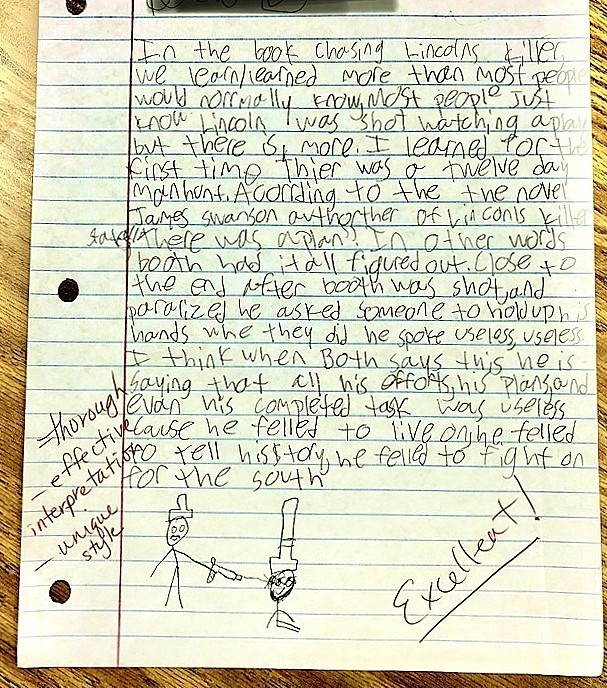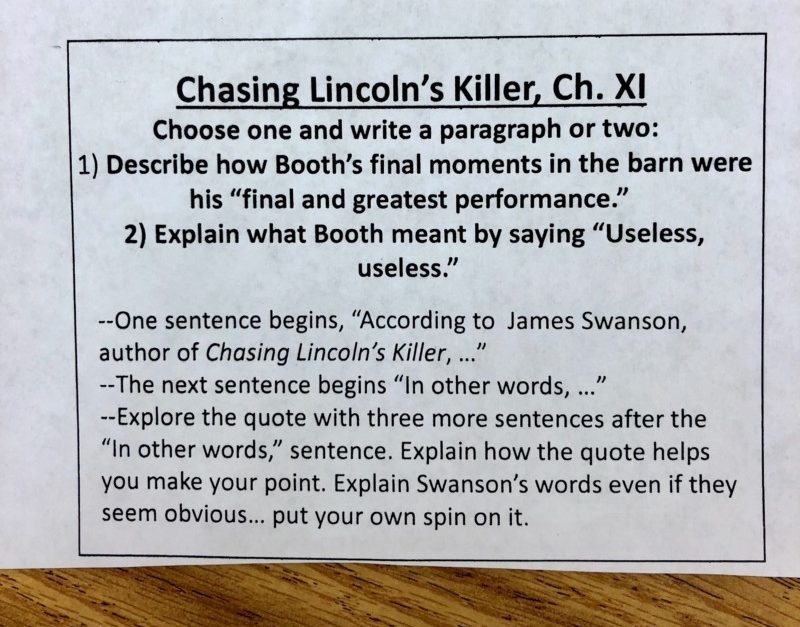
Sometimes I feel that the writing prompts assigned in my middle school English Language Arts classes are too structured, too prescriptive, too bossy.
Do my prompts inhibit my students’ creativity? Are my prompts too controlling, too tyrannical?
And then I receive a response like the one above that reminds me that many young writers thrive with structure. It allows them to convey their ideas and voice clearly and thoroughly to create accurate, effective communication that also possesses a distinct style.
The response above is written by a seventh-grader — let’s call him Josh. While being a strong thinker, he struggles with turning in work, whether assigned as homework or completed during class. Josh is not doing well in my class “grade-wise.”
However, this paragraph shows the higher level of thinking he is able to record in writing. (Yes, there are problems with this response, such as misspelled words and run-ons, but Josh’s idea development is strong and that’s more important to me at this stage of the process. We’ll edit later.)
The paragraph may be hard to discern, so I’ve transcribed it below without corrections:
“In the book, Chasing Lincoln’s Killer, we learn/learned more than most people would normally know. Most people just know Lincoln was shot watching a play but there is more. I learned for the first time their was a twelve-day manhunt. Acorrding to the novel James Swanson authorther of Chasing Lincoln’s Killer, “There was a plan.” In other words, Booth had it all figured out. Close to the end after Booth was shot, and paralized he asked someone to hold up his hands whe they did he spoke useless, useless. I think when Booth says this he is saying that all his efforts, his plans, and evan his completed task was useless cause he felled to live on, he felled to tell his story, he felled to fight on for the south.”
Here’s the prompt I had created below:

And here’s what I love about Josh’s response:
- it introduces and builds up to the evidence in a satisfying way
- it interprets the evidence with two sentences, including that final golden one
- it uses repetition effectively
- it shows the writer’s own spin on the material… it feels original and fresh
I was so impressed with Josh’s response that I photocopied it and shared it (with his permission) with my classes in a mini-lesson on how to thoroughly interpret evidence while asserting one’s own writer’s voice. Being able to share his work — work created with the prompt I thought was too prescriptive —was an authentic way to boost Josh’s writing confidence. And, let’s be real, writing confidence is often what middle school students need the most.
. . .
I’m a middle school ELA teacher who writes occasionally about interesting things that happen in my classroom.

